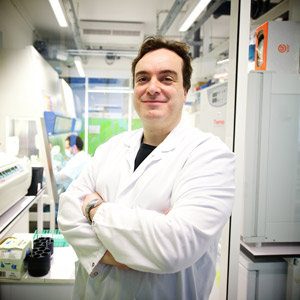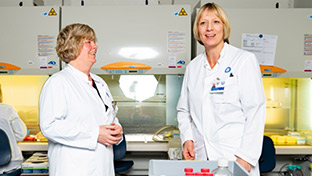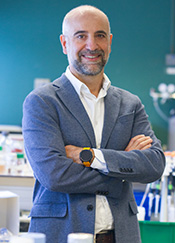A Possible New Avenue to a Cure
Geneva Patient “opens new perspectives for the development of HIV cure strategies”
By Jeffrey Laurence, M.D.

Research question
The only true HIV cures thus far—and there have been six well-documented cases—were achieved through stem cell transplants involving donors with homozygous (two gene) mutations in CCR5, the critical co-receptor for HIV entry into a cell, in five individuals, and a stem cell transplant involving only one CCR5 gene mutated—the “second Berlin patient.” The latter case raised the issue as to whether a donor with intact CCR5—like the vast majority of people—might also facilitate a cure based on immune changes that accompany such transplants.
Cure strategies based on the latter, where CCR5 elimination is not required, would open a very different avenue of cure research.
Findings
A 53-year-old man, the Geneva patient, acquired HIV in 1990. He immediately started antiretroviral therapy (ART) but, given limitations to then-available anti-HIV drugs, had a sustained viral load until 2005, when more effective protease inhibitors became available.

The patient then had an undetectable viral load until 2018, when he underwent a stem cell transplant to cure a cancer involving his lymph nodes and bone marrow. It involved an unrelated donor with normal CCR5. His course was complicated by multiple episodes of graft-versus-host disease (GvHD), in which immune cells from the donor attack cells throughout the host. This required sustained treatment with immune-suppressive medications. However, 32 months ago his ART was discontinued, and he has had no detectable active HIV since and has lost antibodies to the virus, signifying the absence of viral rebound.

This success was not surprising to amfAR researchers. Last year Dr. Jonah Sacha of the Vaccine and Gene Therapy Institute in Oregon found that a monkey infected with SIV, the simian counterpart of HIV, treated with ART for a few months then undergoing a stem cell transplant using a donor monkey with normal CCR5, appears to have been cured. Dr. Sacha proposed that allogeneic immunity, or a graft-versus-host response—a key part of certain cancer cures following stem cell transplants with normal donors—was involved and might be replicated without requiring an actual transplant.
Impact
The authors conclude that “[t]his case opens new perspectives for the development of HIV cure strategies, particularly concerning allogeneic immunity and immunosuppressive drugs.”
amfAR’s role
amfAR was a funder of this research. The study authors include amfAR grantees Drs. Asier Sáez-Cirión (principal investigator), Monique Nijhuis, Annemarie Wensing, and Javier Martínez Picado.
Original article
http://www.ncbi.nlm.nih.gov/pubmed/39222660
Dr. Laurence is amfAR’s senior scientific consultant.
Share This:
